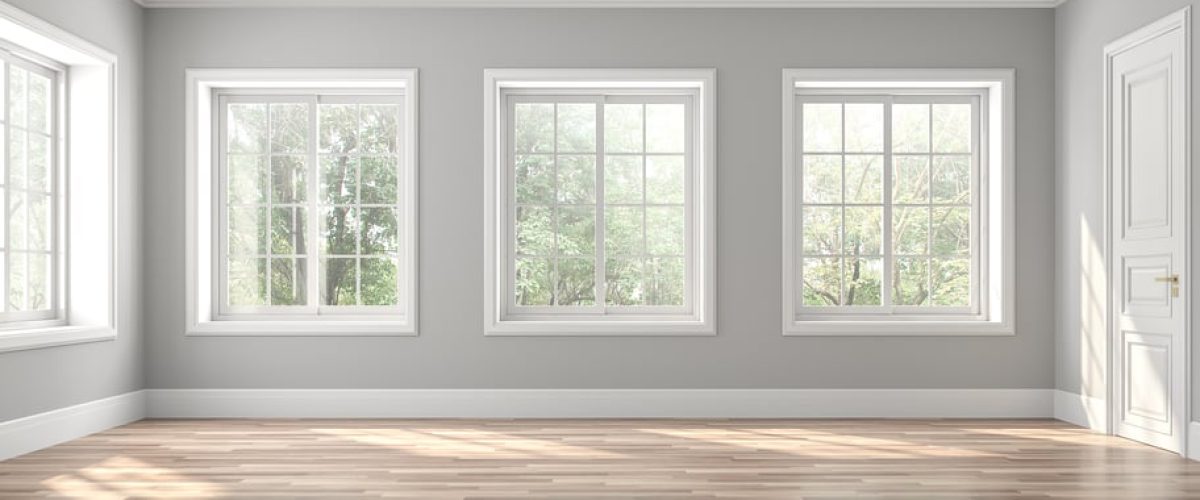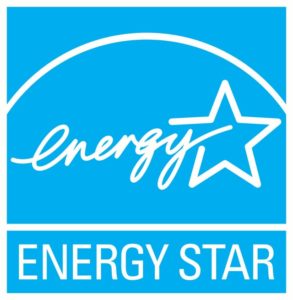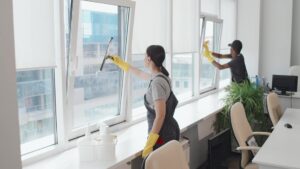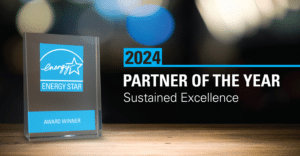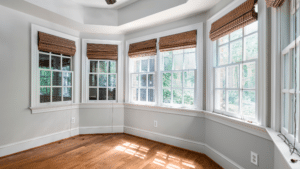One of the best ways to ensure a solid return on investment as a homeowner is to invest in energy-efficient products. Energy efficiency ultimately puts dollars back into a homeowner’s pocket in the form of lower energy bills, improved insulation, and increased home value. Energy efficiency is also a major selling point for homeowners potentially looking to sell their home down the line. With that being said, here are some of the top energy-efficient home improvement projects to consider investing in today.
Window Replacement
The U.S. Department of Energy estimates that windows are responsible for 25-30% of residential heating and cooling costs. That’s an astronomical amount when considered as a fixed monthly cost. Addressing this problem can save you hundreds or even thousands of dollars, and can be done by either upgrading your existing windows, or replacing them entirely.
The first step is to evaluate your windows. Check for points of air leakage, condensation in between the glass, or possible cracking in the frame. Also think about the age of your windows – are they more than 20 years old? If so, that is a strong indicator that new windows are needed. What about rooms in your home that tend to feel a lot warmer than other rooms in the summer? You may want to consider new windows with upgraded glass which could significantly help keep your rooms comfortable and save your HVAC system from running more often than it should.
Replacing your outdated windows provides the highest return in terms of energy efficiency and immediate impact. New windows are designed for better insulation and reduced air infiltration and having them installed by one of our expert dealers can ensure maximum efficiency. When selecting a replacement window there are many factors to consider, such as frame size, operation types (sliding, hinged, up/down open and close functionality) and glass.
If you live in the colder climates of the Upper Midwest or Northeast, then finding gas-filled glass windows, which are typically filled with argon gas, can be incremental in maintaining the internal temperature of a home. If you live in the South, or an area with hotter summers, finding windows with a low emission (Low-E) coated glass can work to reduce the amount of heat that your home absorbs during those summer months. Other factors to analyze when selecting new windows are the U-Factor, or amount of non-solar heat flow that a window conducts, and the air infiltration rating (air leakage rates at cubic foot per minute, or CFM). The lower the U-factor and CFM, the better a window performs. SoftLite’s Elements, Barcelona, and Imperial Elite windows all grade out as the top windows for air infiltration, and energy savings, and can be combined with triple pane Low-E glass for maximum efficiency and insulation.
Finally, be sure to utilize an experienced and professional installation team in order to help provide a tight, superior seal and quick turnaround time. Not only will a SoftLite Dealer ensure that your windows are sealed tight, maintaining efficiency for years to come, but also that you start to see improvement on day one.
Install New Entry Doors
If your home has old or compromised entry doors, then heat loss and air leakage could be one of the main factors contributing to your energy bills. Doors serve as both insulators for your home and protective layers against the elements, and their integrity is crucial to maintaining energy efficiency. One entry door you may want to evaluate is your patio door. Patio doors tend to have a lot of glass in them, which can contribute to heat conduction- raising internal temperatures. Looking for patio doors that utilize Low-E glass will ultimately assist in reducing this conduction. SoftLite’s Kingsroyal Glide patio door addresses all of these factors, and also features:
- Double or triple-pane glass options
- High- performance Low-E coating
- ComfortFoamTM insulation injected into frame, rails, and stiles
- MagnaSeal™ Spacer, a thin wall spacer designed with bent corners to create an impermeable metal barrier that resists condensation and increases durability.
- Ultra-SmartTM triple-fin weather stripping
Another entry door to evaluate are storm doors. Storm doors are a second door that go over your existing primary entry doors. Storm doors ultimately reduce air leakage that exists in your primary entry door, providing a second layer of defense for trapping air, while assisting in the consistency of internal temperatures. A storm door will typically contain an area of space between itself and the existing primary door, which can not only provide additional insulation support, but reduce the amount of conduction that occurs between the two doors. This means your storm door can ultimately act as an initial buffer against the outside heat and cold, without directly transferring any of that energy over to your primary door. SoftLite’s Arrival Series Fiberglass and Storm Doors come complete with:
- Composite rails that protect the door at the top and bottom edges, blocking moisture that can wick into doors.
- An enhanced lock block combined with 1-1/4” engineered lumber lock stiles to increase rigidity and stability.
- A heat- and cold-resistant polyurethane foam core filling the door, making homes more energy-efficient.
- Composite adjustable sills to help maintain a tight seal between the sill and the bottom of the door.
Another door to evaluate is your primary entry door. Your primary entry door typically serves as either the largest exterior door in the home, or the place with the most foot traffic, and thus is responsible for a great deal of your home’s energy efficiency. If your entry door has subpar insulation, cracks, or weather wear, it could ultimately be contributing to cold/hot spots in the house, allowing air conditioning or home heating to seep through and disappear outside. As conditions worsen, it may even allow weather such as wind, rain or snow to enter the home.
There are many types of door materials to consider when replacing entry doors, but a few materials remain superior for energy efficiency. Fiberglass, for example, is incredibly efficient for minimizing conduction. Fiberglass absorbs heat and electricity, while minimizing the amount of summer air that can enter the home and raise internal temperatures. Doors that utilize glass, as we said, can ultimately reduce heat conduction as well.
Invest In Energy Efficiency
Whether you’re looking to improve your existing windows and doors, or replace them entirely, the energy efficiency and savings that come as a result make the projects well worth the investment. SoftLite Windows and Doors offer a variety of products guaranteed to exceed industry standards. For over 80 years, homeowners have relied on SoftLite’s ability to manufacture the most reliable, durable, and high-performing windows and doors on the market. If you would like to learn more about the benefits of installing our stylish, aesthetic, and efficient windows and doors, contact a dealer near you.


 Single Hung
Single Hung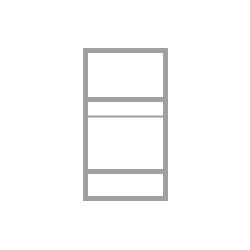
 Double Hung
Double Hung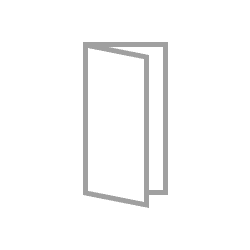
 Casement
Casement
 Picture/Shapes
Picture/Shapes
 Sliding
Sliding
 Awning & Hopper
Awning & Hopper
 Bay & Bow
Bay & Bow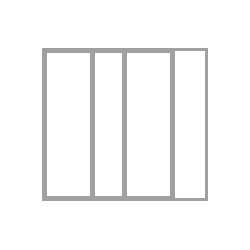
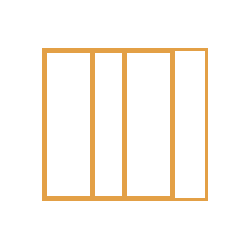 Sliding Patio Doors
Sliding Patio Doors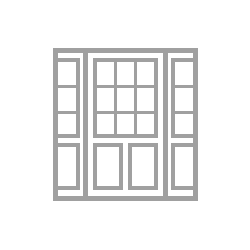
 Entry Doors
Entry Doors